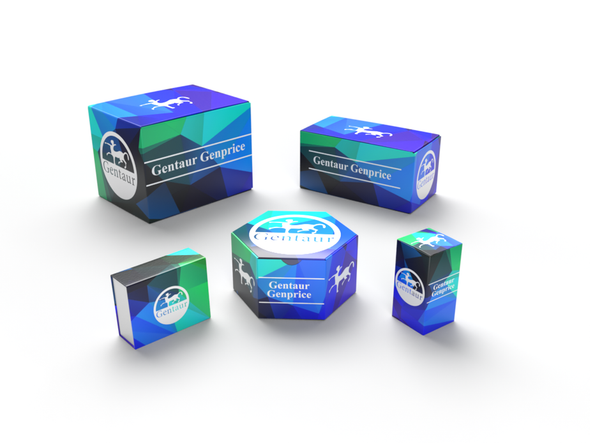740
Mouse Hepatocyte growth factor activator (HGFAC) ELISA Kit | AE60869MO
- SKU:
- 740-AE60869MO
- Availability:
- Usually ships in 5 working days
Description
Mouse Hepatocyte growth factor activator (HGFAC) ELISA Kit | AE60869MO | Gentaur UK, US & Europe Distribution
Species Reactivity: Mouse (Mus musculus)
Abbreviation: HGFAC
Alternative Name: RP11-529E10.2; HGFA; MGC138395; MGC138397;
Application: ELISA
Range: 31.25-2000 pg/mL
Sensitivity: 12.3 pg/mL
Intra-Assay: ≤4.9%
Inter-Assay: ≤6.3%
Recovery: 0, 91
Sample Type: Serum, Plasma, Other biological fluids
Detection Method: Sandwich
Analysis Method : Quantitive
Test Principale: This assay employs a two-site sandwich ELISA to quantitate HGFAC in samples. An antibody specific for HGFAC has been pre-coated onto a microplate. Standards and samples are pipetted into the wells and anyHGFAC present is bound by the immobilized antibody. After removing any unbound substances, a biotin-conjugated antibody specific for HGFAC is added to the wells. After washing, Streptavidin conjugated Horseradish Peroxidase (HRP) is added to the wells. Following a wash to remove any unbound avidin-enzyme reagent, a substrate solution is added to the wells and color develops in proportion to the amount of HGFAC bound in the initial step. The color development is stopped and the intensity of the color is measured.
Product Overview: HGFAC belongs to peptidase family S1. It is first synthesized as an inactive single-chain precursor before being activated to a heterodimeric form by endoproteolytic processing. It acts as serine protease that converts hepatocyte growth factor to the active form. Miyazawa et al. (1993) determined the partial amino acid sequence of the homologous human serine protease and used it to design degenerate primers to screen a human liver cDNA library. They identified a 655-amino acid inactive precursor protein, designated hepatocyte growth factor activator (HGFAC), with a calculated molecular mass of 70, 681 Da. They determined that the active protein purified from serum is derived from the C terminus of the precursor by proteolytic cleavage of the bonds between arg372-val373 and arg407-ile408.
Stability: The stability of ELISA kit is determined by the loss rate of activity. The loss rate of this kit is less than 5% within the expiration date under appropriate storage condition. The loss rate was determined by accelerated thermal degradation test. Keep the kit at 37°C for 4 and 7 days, and compare O.D.values of the kit kept at 37°C with that of at recommended temperature. (referring from China Biological Products Standard, which was calculated by the Arrhenius equation. For ELISA kit, 4 days storage at 37°C can be considered as 6 months at 2 - 8°C, which means 7 days at 37°C equaling 12 months at 2 - 8°C) .






